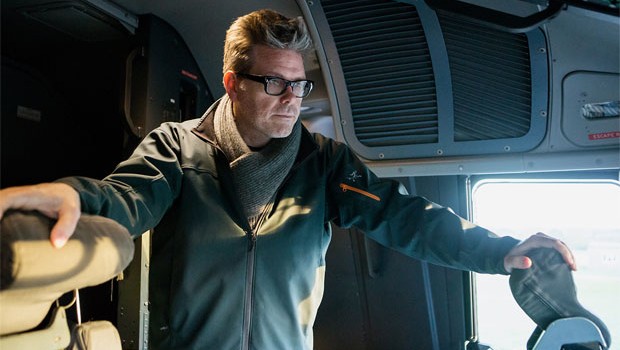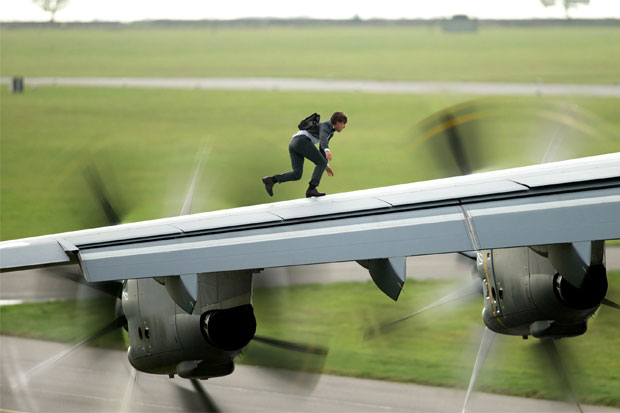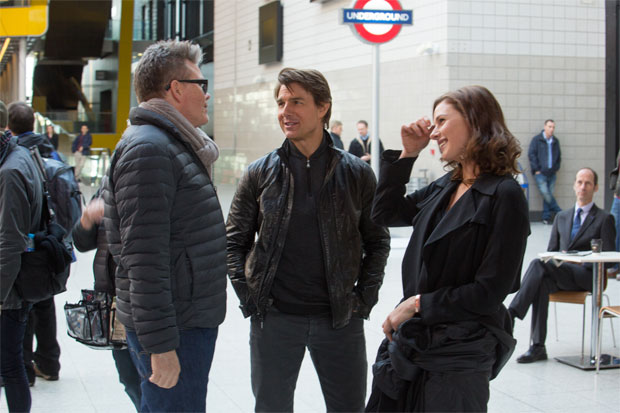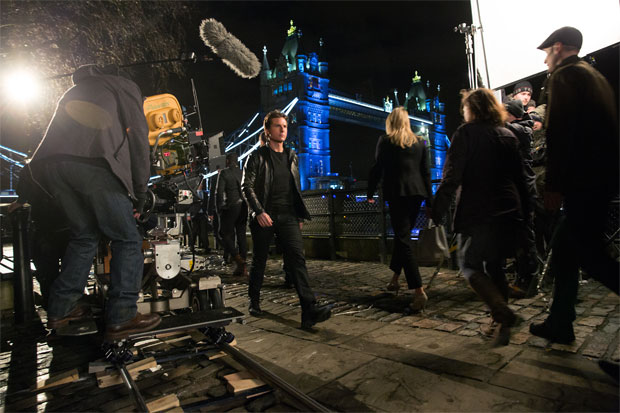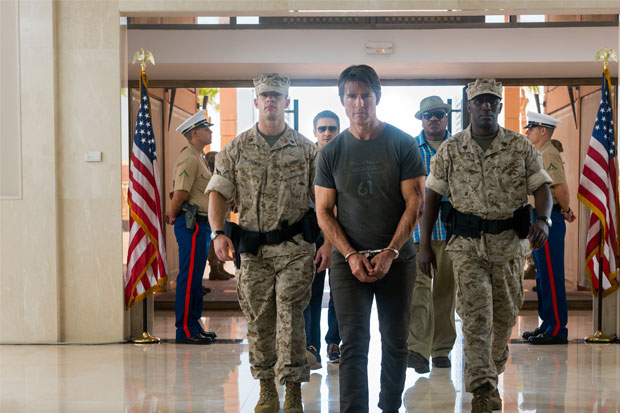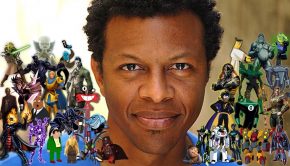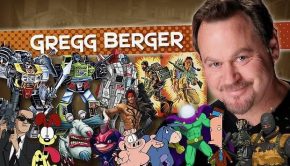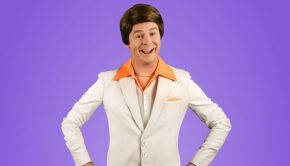Christopher McQuarrie Interview (Mission Impossible Rogue Nation)
How did you first get involved with the project?
A: It came up unexpectedly. I was working with Tom on Edge of Tomorrow and we were working on the script one night and we started talking about films we had worked on in the past and things that we were going to do in the future and he said ‘you should direct Mission: Impossible..’ and without giving it any thought, I said ‘well, that would be great..’ I thought we were talking about it informally and then a little while later he said ‘OK, I’ve talked to everybody and you’re directing Mission: Impossible..’
Can you tell us a little bit about the plot?
A: Yes, I can tell you a bit. The beginning of this movie is shortly after the events of the last movie [Ghost Protocol] and Ethan Hunt is pursuing this mysterious organisation known as The Syndicate. There is very little information to go on and the CIA even doubts it exists and Ethan is determined to prove it. The Syndicate suddenly discovers who Ethan is and set their sights on him, and the people that he would normally be chasing are now pursuing him.
Could you tell us about casting Rebecca Ferguson?
A: Rebecca was a last minute discovery after a very long process trying to find the right person to play this role. Tom and I had an idea of who we wanted the character to be but we also knew that was going to be informed a lot by the actor that we cast so it was sort of a chicken and an egg, we couldn’t really pick the right actor until we had the role and we couldn’t really find the role until we had the right actor. And we had met with a lot of women who were all fantastic and at the very last minute we happened on a five-minute reel that Rebecca had done. Tom and I immediately looked at it and said ‘that’s her..’ And so we flew her in to have a meeting with her. I very quickly wrote scenes for her to do with Tom and Rebecca walked into the room and I remember the cinematographer was there, there were other people there to record this whole thing, there was hair and make-up standing by, and we were very short on time. Rebecca walked into the room and Tom and Rebecca started chatting and they continued talking and somebody came up to me and said ‘if you want to do the audition, we’re running out of time..’ and I whispered back ‘she’s already got the job.’ Because we knew as soon as she walked into the room that it was her. And then we read the scenes as a formality and she was just fantastic.
How does Ilsa Faust fit into the story?
A: She keeps coming in and out of Ethan’s life in the movie. They come together and they are torn apart and they seem to be after the same thing but her allegiances are a little bit in question. And Ethan has absolute faith that he has got her right and everyone around her has got her wrong and the audience is left to make the decision throughout the movie as to what she is really up to.
She speaks Swedish in one scene that we’ve been shown to one of the bad guys. So are the bad guys Swedes?
A: I promise the Swedes are not the bad guys. What happened was originally, before Rebecca [was cast] and before there was a script, we had in mind that she was going to be some nationality other than American – we had played with German, we had played with different ideas. And the scene that you saw was always written that she and the other character were always speaking in a different language as a means of revealing that Ethan could understand what they were saying. They think they are having a private conversation and he can hear them. And so we were always going to cast a different nationality [to American]. And Jens [Hulten] sent a tape to us and Jens’ character in the [original] screenplay dies in that scene, he is killed when he hits his head on a pipe and you never see that character again, but Jens’ audition was so fantastic that we said ‘well, not only do we have to cast this guy, he’s so fantastic we can’t kill him, we have to bring him back for more.’ So Jens’ part began to grow more and more and that’s because of how good he was and his enthusiasm for the role.
You started shooting in Vienna last summer. How did that come about and what role does Vienna play in the movie?
A: We knew very early on that we loved Vienna as a possible location. It’s a place that Tom had scouted several times before on earlier Mission: Impossible films and for whatever practical reasons they couldn’t go there. And part of the process of making a Mission: Impossible film is that you start out with all the things that you want to do and all the things you can do, and also the movie changes as you go along. And there is a sequence we had written involving an opera house and when we looked at the Opera House in Vienna we said ‘that’s the place.’ The two ideas came together and merged in the second reel of the movie with a huge sequence set in Vienna and the Opera House.
And you also shot in Morocco. What was that like?
A: It was amazing – it was really wonderful. We shot in quite a few different places in Morocco; we shot in Marrakech, Casablanca and Rabat.
Could you tell us a little bit about Sean Harris’ character?
A: Sean was wonderful. He is the central villain in the story – he sort of emerges from the shadows in our story and reveals himself to Ethan as the person that Ethan is really hunting and, as it turns out, is hunting Ethan and has a different agenda than one might expect. He’s extraordinary in the film and he’s a really great villain.
What’s the biggest challenge in making a huge movie like this?
A: The biggest obstacle is always time; there’s never enough time to shoot the things that you want to shoot and we’re releasing the movie in July so we’re racing to finish the film. Everything else about it was really a dream – a great experience; the toys we got to play with and the things we got to do. You imagine things and there’s a group of people saying ‘yeah, we can do that..’ We were looking at a model airplane and I said to Tom ‘what if you were on the outside of that?’ and people were like ‘yeah, we can do that..’ So it’s really great and you are limited only by your imagination.
Tell us about working with Tom Cruise, who is right at the heart of this project..
A: First of all you are dealing with someone who doesn’t just do this for a living; this is really what he loves to do. Tom loves to make movies and he loves to entertain. He loves the process so you are always engaged, you are always being encouraged to push yourself further and to think outside the box and you are never really aware of how hard you are working until it’s over and you look back on it and it’s like ‘wow, we did a lot today..’ and Tom is like ‘yes, you did!’ The thing that is really great about Tom is how much he loves doing it and how much he is doing it for the audience, he just really loves entertaining. That brings a whole other energy to the experience to even a hard day – and you are going to have them – at the centre of it all is someone who is extremely positive and extremely confident and when I might feel like we’re in the wilderness and have no idea what we’re doing, you have Tom there going ‘I’ve been here! I’ve been here a million times and it’s going to be fine, it’s going to be OK..’ He’s literally a movie-making machine.
And Tom does his own stunts. Can you talk about that?
A: It’s Tom driving. Even in shots where you can’t see him, it’s Tom driving the car and what was very interesting is that when we were rehearsing a stunt, sometimes we would have somebody else driving a car so we could line up a shot and you can really tell when it’s not Tom driving a car; the car behaves differently when it’s not Tom driving and he takes all of that stuff very seriously. And it’s not just stunts. If there’s a tiny little insert where it’s his hand holding a telephone, it’s Tom’s hand. The interesting challenge that that creates is that we are constantly working on ways to shoot the scene with less cutting; we want to shoot the scene in a way so that we can show that it really is him. And also Rebecca does a lot of her own stunts and where normally you would have two stunt performers there and I would just be cutting around it to hide the fact that it’s two stunt performers in there, I have to get the camera in there and still maintain the energy of the sequence – and it brings a level of realism to those sequences that we otherwise wouldn’t have.
From the footage we’ve seen it seems that Simon Pegg’s character, Benji Dunn, is right in the heart of the action…
A: Yes, you see quite a lot of him. Ethan and Benji is one of the core relationships in the movie.
And Simon’s character brings some humour to the film?
A: Yes, Simon is incredibly funny but he also has some truly dramatic moments in the movie as well. Running throughout the story is this notion of ‘what is the cost of being a spy?’ and how complicated the world has become for them now. We acknowledge the world that we live in now and what the intelligence community has turned into and our characters are dealing with that, specifically Simon’s character.
You’ve talked about Tom being at the heart of the project. You’ve worked with him before this film. How does your partnership work? And do you plan to work together again?
A: We have this wonderful shorthand. We love the same movies and we love the same movies for the same reasons, and so a lot of times I’ll be lining up a shot and Tom will be thinking one thing and I’ll be coming up at it from this direction and we suddenly start finishing each other’s sentences. It’s a little bit challenging for the other actors, especially Rebecca who was new to the process. There would be moments when the three of us would be talking about a scene and Tom and I would be so clear on what was happening and Rebecca would stop us and say ‘I have no idea what is going on, you guys understand what’s going on, but I have no idea..’ And every day was like that. And when other people would come in and make suggestions, maybe something to do with design or a line of dialogue, Tom and I would look at each other and go ‘that’s not quite it..’ and somebody else would suggest something and we’d go ‘that’s exactly it..’ We both are just on the same wavelength in terms of storytelling and it made the movie very easy. As soon as one of us understands what the other one is after it just clicks right in. Do we have any other projects planned? Yes, but we’re not ready to say what that is. What Tom and I joke about is that we’re still working on our first project. The first movie we did together was Valkyrie and there was never a formal agreement for us to actually make that movie. We started having a conversation about movies in general and then that turned into a conversation about Valkyrie and I never formally asked him to do it and he never formally said he was, we just started doing it. And as one movie is ending we’re always talking about the other things that we want to do. And now we’re talking about stuff so something will happen, I hope.
You mentioned the world that we live in, so is there a pressure on filmmakers to reflect that in movies like this?
A: Well, it’s interesting because these films are escapism and they’re entertainment so we don’t want to be reminding you of things that you know perfectly well and you don’t go to the movies to be beaten over the head with it. Instead it’s about embracing the audience’s awareness and using that within the story, and you have to walk a very delicate line where we don’t want to ignore what is going on in the world, but we also don’t want to make what is going on in the world front and centre where that’s really all you’re thinking about when really what you come to see Mission: Impossible for is to be entertained and as such, this one deals with the costs of what they do more than other movies but it does it in a way that is not going to ruin your experience watching it.
You mentioned that you and Tom both love the same movies. Which ones and why?
A: It’s funny the ones that keep coming up – Hitchcock films come up quite a lot. One of the filmmakers that we both really admire is Sydney Pollack. We talk about Sydney Pollack’s work and his storytelling and his approach to character and subjective point of view and how he played with that. But the list is enormous. One of the Hitchcock movies that Tom really loves is Notorious and Notorious has an enormous influence on the things that we do together – we sort of look at Ingrid Bergman as kind of an ideal and Cary Grant as something of an ideal. The way that Notorious is incredibly careful with its use of close ups and how a lot of what we do here – the technique of shooting action nowadays is a lot about making the camera very, very shaky and hiding the fact that there’s not a lot of really very dangerous stuff going on, the camera work is what makes things look dangerous. And what we try to do is stand back from it and let the action happen. It makes it a little more challenging to do the action in a safe way but that’s how we do it. Actually, a film we were talking about the other day was one that we hadn’t seen in a really long time. I watched Sorcerer recently and Tom and I had a conversation about it. I just mentioned it in passing and the next day Tom came in and said ‘I watched that movie last night and I’m so glad. I hadn’t seen it in years…’ And we sat there and dissected individual scenes and talked about the things we loved about that movie. But the short answer is Hitchcock – we’re always going back to him in terms of thrillers and that sort of storytelling. And that’s why Brian De Palma, who directed the first film [Mission: Impossible, 1996] was hugely influenced by Hitchcock and there are things within this story – I kept looking at De Palma’s first Mission: Impossible but also The Untouchables [1987] and looking at certain things he did with filmmaking technique and tried badly to emulate him; he’s brilliant at what he does. But we sort of took a page out of that book and thrillers in general that we love.
Can you tell us about what must be one of the most dangerous stunts that’s ever been done, when Tom is hanging outside of an airplane. What’s the insurance like on a sequence like that?
A: It’s funny, the insurance question comes up a lot and I’ve not got to the bottom of the mystery myself [laughs]. Tom and I just have the tendency to go ahead and do things until somebody comes and tells us to stop. But yes, that stunt was incredibly dangerous. There were a number of variables. And the concern about him falling off the plane was the least of our concerns. Interestingly enough what kept him on the plane was the pilot – if the plane went beyond a certain threshold nothing in the world was going to keep Tom on the plane – we could have stapled him to the plane and he was not going to stay on. So that consideration was all about the pilot’s hand on the throttle and the trust that Tom had in the pilot. But the other variables, the things that were most dangerous, was that he was in a great deal of danger actually on the runway before the plane took off because any debris on the runway – and it was a very large runway in a very large field and there was only so much we could do to make sure we had cleaned up all the debris. But any object on the runway that could have been sucked into the propellers would have become a bullet and even if a tiny grain of sand had hit him in the face it would have been devastating. Once we were airborne the biggest concerns were bird strikes and a bird hitting Tom at that speed, that would have been it. And so in every other stunt that we’ve done with Tom, it’s always about reducing those variables. When he is doing driving stunts, he’s a very experienced driver and he is in control of the car, he has a seat belt, he has safety harnesses, but of course, anything can happen and a couple of times the car almost rolled over but it didn’t and he was OK. But those are all variables within Tom’s control. Tom is driving the car and Tom knows how far he can push it. When he is on the side of that plane, all the variables are out of his control and he’s really just at the mercy of chance and that was very nerve wracking – that was a scary couple of days.
To wrap it up, what can the audience expect from Mission: Impossible – Rogue Nation?
A: I hope you can expect to have a really good time with the movie. It’s a very different Mission: Impossible but at the same time it sort of carries the spirit of the other four movies with it and we’re very proud of it and we hope you all like it.
Mission Impossible: Rogue Nation Available on Blu-ray, Digital & DVD 9 December 2015

